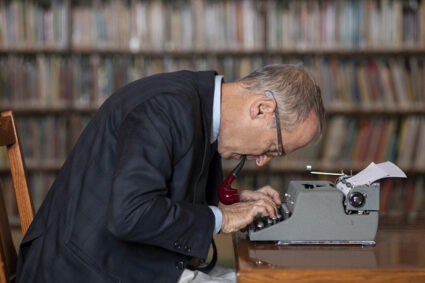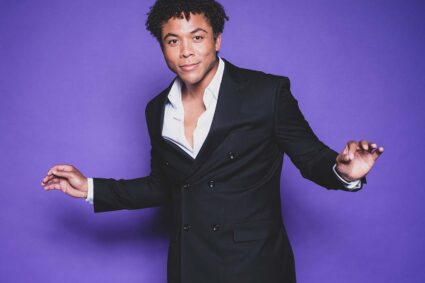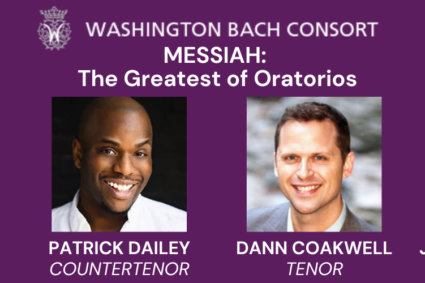It was a night of remembrance at The Music Center at Strathmore. It was the 100th anniversary of the birth of Witold Lutoslawski, a Polish composer born January 25th 1913. The program also featured the works of the Russian composer Peter Ilyich Tchaikovsky. The National Philharmonic Orchestra was conducted by Miroslaw Jacek Blaszczyk and featured Cellist Dariusz Skoraczewski.
The program started with Tchaikovsky’s “Variations on a Rococo Theme, for Cello and Orchestra, Op. 33”. This piece was classicism at its finest. Being a rococo, I would not characterize it as excessive, ornamental, and trivial. I would best characterize it as an adagio, a slow moving tempo with rubatos and cadenzas incorporated in it to which the tempo gradually increases. The cello solos would make great chamber music and Dariusz Skoraczewski played them extremely well. It was grazioso and legato, graceful and smooth. There were various vibratos incorporated into the solos as well, the finger movements were eloquent and emphasized. Skoraczewski’s progression of the portamentos was effortless. During the coda, the last movement of the piece, the tempo started to rapidly increase. It was a presto movement with elaborate cello cadenzas. Skoraczewski executed this masterfully.
The next piece was Lutoslawski’s “Cello Concerto” a piece in which he dedicated to Mstislav Rostropovich, a famous 20th Century cellist. This piece is what I would call one of Lutoslawski’s aleatoric compositions. There was a lot left to chance, it can best be described as a random procedure played in a very specific manner, like a staccato. I would imagine this would very difficult to play due it its adventitious nature and off beat tempo, but The National Philharmonic Orchestra and Skoraczewski executed it true to form. The conductor Miroslaw displayed a vibrant and emotional expressionism as he cued the loud blaring cadences of the horns section. It was emotionally heterodox. I thought it would make the perfect movie soundtrack for a psychological thriller or scary movie. There was a musical dissonance almost as if the composure was a heretic elegy. The violin pieces were whirl windingly sound. Skoraczewski’s cello solos were captivating.
The final piece was Tchaikovsky’s “Symphony No. 4 in F minor, Op. 36” This piece was amazing. It was a tutti, which meant Skoraczewski’s evening was finished. In the “Andante Sostenuto; Moderato con Anima” There was a continued reprise from the opening triumphant horn melody to a beautiful polyphony that was played in concession between the clarinet, flute, and bassoon. Mirolaw conducted the loudness and softness of the composition masterfully. He rose nearly off of his feet for the loud stanzas and crouched down nearly to the ground for the soft stanzas. The entirety of Symphony No. 4 was very dynamic, he was an excellent maestro. The “Andantino in Modo Di Canzone” was emotionally heart wrenching, there is a violin and cello measure synonymous with this piece that for me is a real tear jerker. It was fascinating hearing the violins and cellos play in unison increasing the volume of this beautiful piece. The pizzicato in the “Piu Mosso, Tempo 1” was a change of pace which evoked curiosity. The “Finale” was glorifying. The aforementioned unison violin and cello playing took center stage.
It was quick, there was a vivace. Seeing the violin bows rock back and forth so quickly along with their heads swaying to the music reminded of a rock concert, and made for a great finale. To me every single member of the National Philharmonic Orchestra is a virtuoso. They must be seen, it is to behold.
TRR Concert Revue by Alan Duckworth
Photo Courtesy of Christian Colberg



